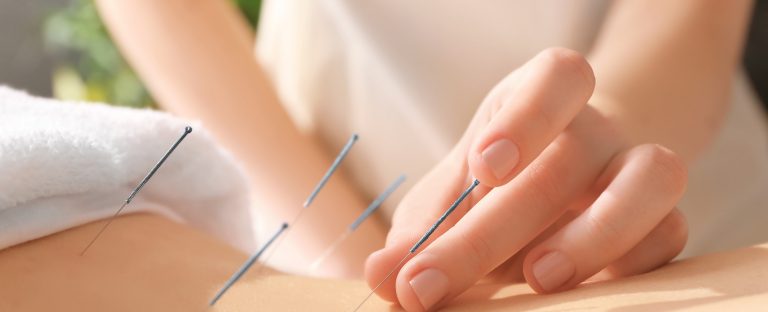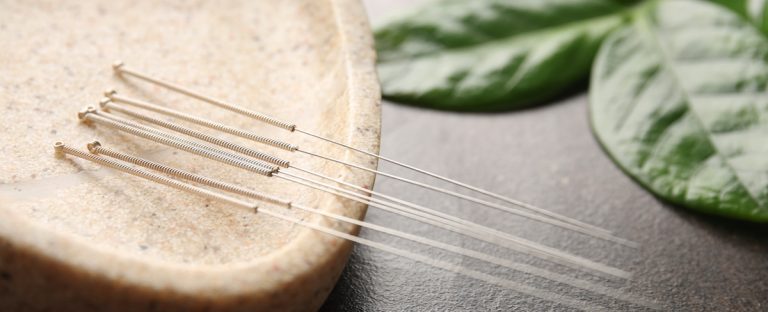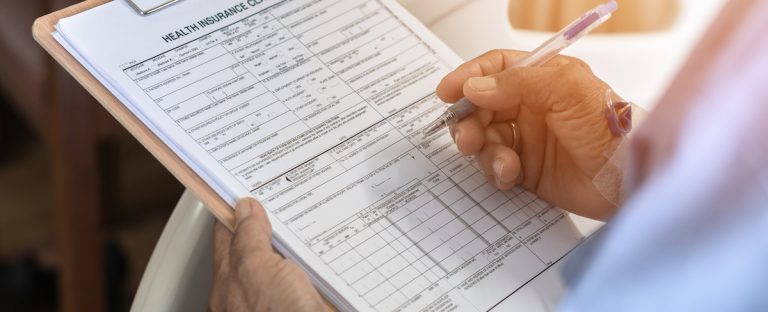As a holistic billing company, we focus on integrative health and billing insurance for holistic providers, but we are often asked by our clients for recommendations on how to promote their practice. In our experience, your acupuncture practice can gain new customers and strengthen your current client base with the right marketing.
Learn more about how your holistic practice can develop the most effective acupuncture marketing strategy for overall enhanced revenue cycle management!
Why Marketing Your Acupuncture Process Helps You Stay Competitive and Drive Additional Income

The importance of successfully marketing your acupuncture practice cannot be understated. Even if you have some of the best delivery of care to your patients, your new patient acquisition will be low if you can’t get your name out there! With the right marketing strategy, your acupuncture practice can stay competitive and continually bring in new clients—which means more revenue.
Staying competitive is crucial to driving additional income in an increasingly saturated holistic market. More people than ever before are turning to holistic medicine to maintain and restore their health. The global complementary and alternative medicine market is predicted to have an over 22% growth rate from 2021 to 2028 – eventually reaching over $ 400 billion by 2028. As more and more people turn to holistic medicine, your acupuncture practice must adopt competitive marketing techniques to stand out from the crowd.
Developing a marketing strategy for your holistic practice starts at the basics: delivering the right message. Since more people are turning to holistic medicine to alleviate their back pain and other ailments, cultivating your unique treatment approach that is both authentic to your practice and helps answer the questions clients are looking for will also gain you not only new patient acquisition, but committed clients who keep returning for more.
Acupuncture Marketing Best Practices
In such a growing market saturated with competitors, it may seem difficult to stand out from the crowd. By adopting these best practices, your acupuncture practice can better market to new patients as well as maintain existing relationships with your current client base.
Develop Your Brand
Part of what will set your acupuncture practice apart from the competition is developing your acupuncture clinic’s unique brand. This includes your message style and overall mission statement. You’ll have to address what kind of approach you’ll take to market your practice to the public and what tools you’ll use.
All of this will influence your message tone. For instance, if you’re marketing acupuncture to the elderly, you will use a different tone, style, and content than if you were attracting a millennial client base. Or, let’s say you’re focusing on delivering acupuncture services as an opioid alternative for patients recovering from addiction or surgery. You would use a much different tone of voice in your marketing that speaks to their specific needs than if you were trying to attract a more generic audience.
Grow Your Online Presence
In today’s digital age, building an online presence for your acupuncture practice is a must. This includes an optimized acupuncture website so your business can be easily accessible to those online. A successful website is one where you have the basics, such as your location, contact information, and a bit about who you are and your practice. However, you can add increased value to your website by including what makes your acupuncture practice unique – such as your treatment philosophy, team bios, and FAQs about acupuncture itself.
You also have to make your holistic practice easy to find online as well. Claim your Google business profile so local customers can help locate you in the “acupuncture practice near me” search results. Consider also adding your practice to review sites, such as Google Reviews and Yelp, for customer feedback. Since prospective patients like reading online customer reviews, these can be valuable platforms to highlight your holistic practice.
Utilize A Wide Variety of Digital Marketing Tools
Mastering omnichannel acupuncture marketing is key to reaching a variety of audiences. There are so many options out there now for reaching new customers that you don’t want to just stick to one digital marketing tool!
What digital channels you choose to market on should reflect on the audience you’re trying to reach, as well as the voice of your practice. Some digital marketing tools for your acupuncture practice can include:
- Social media marketing, including using Facebook, Instagram, Twitter, and LinkedIn.
- Content marketing, such as providing useful content like blogging on your website.
- Email marketing to stay in touch with established patients.
Regardless of what digital marketing channels you use, or how many of them, the messaging on all platforms should remain consistent. This helps deliver the authentic image and message you want about your acupuncture practice to potential new clients and established ones.
How to Create a Google AdWords Campaign to Drive New Patient Acquisition in Less Than One Hour!

A Google AdWords campaign is by far the fastest and most cost-effective way to get your site to appear at the top of Google search results. Google‘s AdWords is a pay-per-click system where you pay only when a prospective patient clicks on your ad. When rolled out effectively, Google AdWords campaigns are a great way to drive new patients to your website, and ultimately help you generate more new patients.
By following these six easy steps, you can have a killer Google AdWords campaign for your practice in less than one hour!
Step 1: Set Up a Google AdWords Account
Go to www.google.com/adwords. Setting up your account can be completed in a few minutes.
Step 2: Create Your Campaign
Once you have set up and logged in to your account, you will want to create a new advertising campaign. Campaigns should be organized by the various services you want to advertise (such as chronic pain, cupping, and manual therapy). You will later create “Ad Groups” under each campaign to target specific services.
- Set the campaign name. If you want to promote “accepting insurance,” set your campaign name accordingly. Tying your campaign name to services you want to market will keep you organized and help you identify appropriate keywords and ad groups.
- Specify a geographical location for your ads to appear in. By clicking the “Let me choose” option, you can specify the city, region, or zip code so your ads only appear to your targeted audience. Limit your locations to keep your budget manageable.
- Set your daily budget. Depending on the keywords you choose, a single click can range from 20 cents to $14 or more and will vary by location. To determine your daily budget, decide how much you are willing to spend on a campaign each month and divide it by the number of days in the month.
Step 3: Create Ad Groups
Ad groups are a collection of ads under a campaign that corresponds to a group of related keywords. Creating ad groups enables you to further segment your campaign to focus on specific products or services you want to promote.
Step 4 Generate Ad Text
After you create ad groups, you will need to set the headlines, descriptions, and URLs.
- Headline (25 characters): Write a brief statement that includes the related keywords. For example, a good headline might read “Acupuncturist Accepting Insurance.”
- Description: Next, create a two-lined description (35 characters or less) that emphasizes the benefits of your practice and includes a clear “call to action” to encourage potential patients to click, call, or contact your practice.
- Add URLs: You will add your display URL (your web address) and the destination URL (the page a patient will be sent to after clicking your ad). The destination URL should lead to a page on your website that describes your services to help prospects quickly access information on the topic for which they searched. An example could be:
Headline: Acupuncturist Accepting Insurance
Description Line 1: Acupuncture treatments for back pain.
Description Line 2: Call for your free consultation!
Display URL: http://www.acupractice.com
Destination URL: http://www.acupractice.com/services
Step 5: Choose Relevant Keywords
Choose keywords that relate to your ad group title. When brainstorming keywords, make sure you use terms and phrases that people might search for on Google to find your practice. We recommend you use the AdWords keyword tool to help you build your keyword list.
Step 6: Add Corresponding Text into Your Website
If you are advertising a special offer or particular treatment, make sure your ad links to a page on your website that displays this information to help prospective patients immediately find what they are seeking. Edit your webpage to include your keywords, the title of your ad group, and the title of your campaign.
Remember, Google is the search engine for 87% of all web queries. By creating an effective Google AdWords campaign, you can drive immediate visitors to your website and convert these online search users into new patients.
Drive Revenue to Your Acupuncture Practice With HBS!
At Holistic Billing Services, we deal exclusively with holistic healthcare practices providing acupuncture, massage therapy, and chiropractic treatments. Whether you have questions on acupuncture insurance billing or other methods to enhance your revenue cycle management, feel free to contact our team today and let us know how we can help your acupuncture practice.
Medical billing and coding is a complicated, but necessary, process for both medical and holistic practices looking to be reimbursed for services. However, the world of medical billing processes can become rather complicated very quickly, with people throwing around a lot of technical terms that holistic practices may not be accustomed to hearing or dealing with. If your acupuncture practice plans on accepting insurance, you will need to become familiar with this terminology to maximize your insurance reimbursements and minimize denied claims.
You will frequently hear the following common acupuncture billing terms when dealing with insurance claims or working with an experienced acupuncture billing company like Holistic Billing Services. To ensure a streamlined acupuncture billing experience, keep this list handy in case you ever need to quickly reference unfamiliar acupuncture billing terms!
What is Acupuncture Billing?

Medical billing is the process of healthcare providers submitting claims with insurance companies in order to be reimbursed for their services. This can include anything from treatments, procedures, and testing. The medical billing process is essential for most practices to receive payments.
Acupuncture billing practices are not the same as traditional medical billing and have a different set of requirements. Before billing can be initiated, many holistic practices must first be credentialed with health insurance companies. On top of your holistic practice’s insurance enrollments, the right billing, coding, and SOAP documentation must be used.
Acupuncture billing uses its own unique set of codes. Since acupuncture services are always coded in 15-minute increments, you will use one code for the initial 15 minutes of service and then a separate code for additional units of time. Acupuncture CPT codes will only vary if you include electronic stimulation in your treatment.
There are numerous errors that can cause your insurance claims to be denied or delayed, resulting in your holistic practice not being paid on time for your services. A successful acupuncture practice is one with accurate acupuncture insurance billing, but how can you stay on top of it?
As an acupuncture billing company, our team at Holistic Billing understands that translating Eastern medicine techniques into Western medicine CPT codes can seem daunting. Even the most experienced acupuncturists get their procedure coding mixed up. But if you want to avoid insurance company denials, you need to use proper acupuncture CPT codes. Here are some helpful tips to avoid claim delays and denials so your practice can be paid for your acupuncture treatments.
How Providers Bill Insurance for Acupuncture

Current Procedure Terminology, or CPT codes, are used by insurance providers to document most medical procedures performed by healthcare providers, whether traditional or holistic.
These CPT codes characterize the type of procedure being done so healthcare providers can bill insurance companies for the right services and receive reimbursements.
Although holistic practices also use CPT codes to receive payments from insurance providers, they have their own unique codes and requirements which can make the process prone to errors. Understanding when to use the right acupuncture insurance billing codes is crucial to ensure a streamlined reimbursement process and receive timely payments for acupuncture treatments.
When mistakes are made during the billing process, whether due to inaccurate patient information or coding, the insurance company can deny the claim. This can delay the amount of time your holistic practice is paid by weeks – if not longer.
In the world of billing insurance, insurers improperly issue medical necessity denial claims on the basis of treatments being not medically necessary quite frequently. This is especially true in cases where you are billing insurance for acupuncture, medical massage, or chiropractic treatments. Sometimes such denials are a mistake, but all too often, these denials by insurers are intentional and intended to avoid coverage for treatments.
Since these persistent denials exist, it is important for you to understand how to fight a medical necessity denial in order for your patient to receive all of the coverage they are entitled to. Learn more about how to appeal a medical necessity denial claim and the medical appeal letter template you should use for your best chances of revoking the denial.
Is Acupuncture Covered by Insurance?

Healthcare coverage for integrative medicine treatments like acupuncture and massage therapy has come a long way in the United States. Nowadays, it is common practice to complement traditional health care with other modalities like massage and acupuncture. However, not all health insurance plans cover these services, and those that do vary when and what they cover. On top of this, the insurance industry makes the billing process for acupuncture and other holistic treatments difficult and complicated. While some insurance plans will allow these sorts of treatments for a wide variety of medical conditions, others will have more limited plans.
Medicare has special requirements for acupuncture; recently in January 2020, the Centers for Medicare and Medicaid Services (CMS) announced their decision to cover acupuncture for chronic low back pain. Although the update was especially important, as it marks the first time acupuncture codes can be reimbursed by Medicare, the additional requirements made it impossible for most licensed acupuncturists to take advantage of it.
Unfortunately for holistic practitioners, the insurance industry makes billing for acupuncture and massage complicated with a variety of accompanying regulations and requirements. The majority of covered acupuncture services that need to be billed to insurance fall under four essential acupuncture CPT codes and two medical massage codes. Like other similar therapy-based practices, integrative health practitioners bill their services according to Current Procedural Terminology (CPT) codes. Each code is considered a billable unit used to track what treatments have been administered.
Acupuncture and massage services are always billed in 15-minute increments. For instance, in acupuncture, you will use one code for the initial 15 minutes of service and then a separate code for additional units of time. If you include electronic stimulation in your treatment, your codes will vary as well.
Evaluation and management services, or office visits, may be billed by acupuncture physicians on the initial patient evaluation and periodic follow-up evaluations, typically every 30 days or every sixth visit. However, it is not appropriate to bill these codes every time the patient receives acupuncture treatments, as acupuncture CPT codes 97810, 97813, 97811, and 97814 all include evaluation and management done as part of the overall daily treatment.
Are Chiropractic Treatments Covered by Insurance?

Just as with acupuncture, chiropractic treatments used to be rarely covered by insurance. This has since changed; most health insurance plans now cover chiropractic treatments due to the holistic practice’s positive reputation among many Americans for effective treatments for neck and back pain. In fact, chiropractors see an estimated 35 million people every year in the United States alone. Despite its popularity, insurance may only pay a certain amount of chiropractic treatments or under certain circumstances just as with other holistic disciplines.
Medicare will cover chiropractic manipulation of the spine for back pain management, but there are additional caveats just as with acupuncture Medicare coverage. To qualify for Medicare reimbursement, the patient must have active back pain and seek out chiropractic care that corrects this problem. Any chiropractic services administered as maintenance or preventative will not be covered, as well as any massage therapy or X-rays.
More than 10 million acupuncture treatments are administered annually in the United States – and the number continues to grow! Its rise in popularity has made it one of the most utilized forms of integrative-medicine in the country. The advantages of acupuncture extend from acute pain relief to a safe and effective alternative to opioid medications.
As more scientific studies are proving the efficacy of acupuncture treatments, it’s no doubt that this holistic therapy will continue to expand and become an even more accepted medical method for pain management.
What is Acupuncture?

A key feature of traditional Chinese medicine, acupuncture treatment involves the insertion of very thin needles through a patient’s skin at strategic points along the body, in various depths. Due to their small size, the needles do not bring any discomfort but can provide relief by interrupting pain signals throughout the body.
While acupuncture has been traditionally used to treat discomfort from a wide variety of diseases and conditions, it is increasingly used as a remedy for stress management and overall wellness.
The world of insurance billing is complex, and even more so for holistic practices. Understanding when to use the right acupuncture billing codes and procedures is essential to any successful medical practice – whether holistic or traditional. Accurate coding and billing practices ensure a streamlined reimbursement process so your practice can get paid and deliver the best care to your patients.
As a billing company focused on holistic healthcare providers, Holistic Billing is an expert in the world of acupuncture billing CPT codes. In any given year, roughly half of our new clients have never billed insurance before they started with Holistic Billing Services, so we are quite accustomed to their most frequently asked questions. Find the answers to many of the most common questions about Acupuncture CPT codes and billing practices below!
The opioid crisis is one of the major health challenges in the United States today, and it’s responsible for destroying thousands of lives. Whether addiction stems from prescription medications or illegal street drugs, more than two million Americans are victims of opioid misuse.
Finding alternatives to highly addictive opioid drugs is a crucial key to combating this epidemic. Increasingly, holistic practices have been looked at as safer and more effective alternatives to opioids. Acupuncture treatments, among other drug-free therapies, offer pain management solutions with minimal burden to patients, opening up a wide variety of opportunities for people to seek pain relief without the side effects of opioid drugs.
Understanding the Opioid Crisis
 The United States is in what’s currently being described as the “Opioid Crisis.” Up to 130 people die every day in the United States from opioid overdoses. The misuse of opioids, ranging from heroin, prescription pain relievers, and synthetics such as fentanyl, has become a severe burden on social and economic welfare, as well as a public health crisis. The Centers for Disease Control and Prevention estimate that the epidemic costs the United States $78.5 billion a year, including treatment costs, law enforcement, healthcare, and lost productivity.
The United States is in what’s currently being described as the “Opioid Crisis.” Up to 130 people die every day in the United States from opioid overdoses. The misuse of opioids, ranging from heroin, prescription pain relievers, and synthetics such as fentanyl, has become a severe burden on social and economic welfare, as well as a public health crisis. The Centers for Disease Control and Prevention estimate that the epidemic costs the United States $78.5 billion a year, including treatment costs, law enforcement, healthcare, and lost productivity.
The crisis has its roots in the late 1990s when pharmaceutical companies reassured doctors that opioid pain relievers were safe and addiction-free, leaving healthcare providers to prescribe them in great numbers to patients who complained of pain. The massive influx of prescription drugs has led to many patients becoming addicted, despite never touching illegal drugs. This led to the mass availability of heroin and synthetics, such as fentanyl, on the illegal market, allowing for the current widespread abuse of opioids in the country.
By the late 2010s, the crisis had reached emergency proportions. On October 26, 2017, the United States officially declared the opioid crisis as a National Public Health Emergency and the federal government began necessary taking steps to address the epidemic. The United States Department of Health and Human Services’ Five-Point Opioid Strategy was released in April 2017 as a framework for the federal response to the epidemic. The strategy partially aims to,
“Support cutting-edge research that advances our understanding of pain and addiction, leading to the development of new treatments, and identifies public health interventions to reduce opioid-related health harms…”
This is key for developing pain treatments that are alternatives to opioid drugs. Many have recognized the importance of holistic medicine, especially acupuncture treatments as alternative methods of pain management.
Holistic Alternatives to Opioid Drugs
The options of other pain management methods over opioid drugs have increased with the crisis’s severity. Popular alternatives for pain medications range from over-the-counter drugs, such as acetaminophen (Tylenol), to non-drug therapies that are used in conjunction with non-addictive medications. These include:
Physical Therapy
Physical therapy has been widely seen as a successful alternative to opioid drugs. Physical medicine and rehabilitation include options such as deep-muscle and ultrasound massages, whirlpools, as well as traditional physical therapy exercise programs that can prevent and manage pain from injuries or disabilities.
Yoga
This meditative movement practice has surged in popularity over the years and can not only improve fitness and reduce stress, but has been found to especially reduce discomfort in people with lower back pain. It also features mind-body techniques, including breathing exercises that can help induce relaxation and lower anxiety.
Acupuncture
This increasingly popular ancient Chinese practice uses fine needles inserted in various “acupuncture points” across the body to treat pain. Since the needles are so small, they themselves do not inflict pain but can provide significant pain relief for those with regular appointments by interrupting pain signals throughout the body.
Is Acupuncture an Effective Opioid Drug Alternative?
Acupuncture is an effective pain management alternative to opioid drugs and is at the forefront of some of the more touted holistic alternatives to pain issues. When performed by licensed acupuncturists, acupuncture is a safe and powerful modality for pain management for a variety of injuries and disabilities without the destructive side effects of opioid drugs.
One meta-analysis of almost 18,000 patients across 29 randomized controlled trials found that certified, accurate acupuncture was significantly more effective than the absence of the service.
It’s becoming increasingly accepted that acupuncture could be prioritized as a replacement for opioid drugs for both chronic and acute pain. Despite their effectiveness, acupuncture treatments are minimally invasive so they cause minimal burden to patients with no lasting side effects.
What Does Acupuncture Treat?
Acupuncture treatments can be used to treat a wide range of symptoms, including stress management, pain control, and neurological and respiratory disorders. When used as an opioid drug alternative, acupuncture treatments can be manifested as either treatment for pain management or as an opioid replacement.
Acupuncture for Pain Relief
Acupuncture treatments have been increasingly known as the “go-to” for integrative therapy for its effectiveness on pain relief. According to the National Institute of Health (NIH), results from a number of studies have found that acupuncture treatments reduce pain for a number of ailments, including types of pain that are often chronic such as low-back pain, neck pain, and osteoarthritis/knee pain.
Additionally, the side effects are minimal when compared to other pain management solutions. Relatively few complications from acupuncture have been reported when it’s administered correctly. In 2017, the American College of Physicians issued recommendations for treating chronic lower back pain, including acupuncture as an effective non-drug therapy. As providers try to limit prescribing opioid drugs as pain management options, effective and as safe therapies such as acupuncture treatments are increasingly pushed to the forefront of pain control methods.
Acupuncture as an Opioid Drug Alternative
Acupuncture has the potential to become a front-line treatment for pain management, reducing the number of opioid drug prescriptions being issued. As an opioid drug alternative, acupuncture treatments can be used in place of the prescriptions for acute to chronic pain for the same effects with only minimal burden on the patient.
A Cochrane study of five randomized trials and 285 patients found benefits of acupuncture for cancer pain relief when compared to traditional pain medications, which are often opioid drugs. Additionally, some studies suggest that acupuncture activities opioid receptors in the brain. When used in conjunction with acupuncture treatments, this would likely allow for lower doses of opioid medication to be needed for patients with severe pain.
What are the Health Benefits of Acupuncture?
The health benefits of acupuncture treatments are numerous and can be used to treat a wide variety of medical conditions and symptoms. Besides its benefits as an opioid drug alternative, acupuncture can be used to treat everything from migraines and headaches to recovery from surgery.
While the NCCIH notes that acupuncture treatments have been proven to help treat lower back pain, neck pain, osteoarthritis, knee pain, and chronic migraines, the Acupuncture Evidence Project reviewed the effectiveness of acupuncture for 122 treatments over 14 clinical areas and have found some evidence of effect for 117 conditions.
Other conditions that acupuncture treatments can relieve pain for include:

- High and low blood pressure
- Chemotherapy-induced nausea and vomiting
- Facial pain
- Morning sickness
- Dental pain
- Inducing labor
Additionally, one of the more attractive benefits of acupuncture is that there are minimal side effects when compared to medication drugs, such as opioids. It’s a safe and non-addictive method for those looking for a minimally invasive pain solution.
Let HBS Handle Your Billing for Acupuncture Services so You Can Focus on Delivering Better Patient Care!
As the acupuncture service industry expands, you want to focus on growing your holistic practice and ensuring that your patients are receiving the best in acupuncture treatments. Billing for acupuncture services can be tedious, but it doesn’t have to be.
Holistic Billing Services specializes in the unique requirements of acupuncture practices to ensure that they get the insurance reimbursements they’re entitled to receive for their services. By partnering with an experienced medical billing team, you can spend less time thinking about managing the ins and outs of CPT coding and insurance claims and more time delivering higher-quality care to your current patients.
Ready to accelerate your practice’s revenue cycle management and grow your acupuncture practice? Contact our billing and coding experts today.
On January 21st, 2020, the Centers for Medicare and Medicaid Services (CMS) announced their decision to cover acupuncture for chronic low back pain. This is defined as localized pain in the lower back that persists for more than three months. The decision was momentous because it marked the first time acupuncture services could be reimbursed by Medicare.
Unfortunately, the decision also created a great deal of confusion. While Medicare now covers acupuncture services for lower back pain, there are a number of important conditions that must be met for treatment to be eligible for acupuncture billing. This makes many wonder what factors are considered for Medicare acupuncture coverage.
For example, the treatment must be administered under the “adequate supervision” of a physician, physician assistant, or nurse practitioner. This may sound simple enough, but the language used by the CMS ruling to define who may administer that treatment is deceptively complex.
Does Medicare Pay for Acupuncture?
The simple answer? Medicare doesn’t cover acupuncture for any condition other than chronic low back pain.
There are also additional acupuncture insurance billing requirements to follow, although the ruling has created the impression that any licensed acupuncturist can bill services to Medicare as long as they administer treatment in the presence of a physician, physician, assistant, or nurse practitioner. However, this is not an accurate interpretation of the CMS decision.
The ruling clearly states that a provider must be an MD/DO, physician assistant, nurse practitioner, clinical nurse specialist, or auxiliary personnel. They must also “possess a master’s or doctoral-level degree in acupuncture or Oriental Medicine from a school accredited by the Accreditation Commission on Acupuncture and Oriental Medicine (ACAOM)” and hold a “current, full, active, and unrestricted license to practice acupuncture” in the state.
Some holistic practices have seized upon the category of “auxiliary personnel” and taken it to mean something akin to an independent contractor. While an independent Licensed Acupuncturist may qualify as auxiliary personnel, the CMS ruling is quite clear on how this category can administer treatment:
“Auxiliary personnel furnishing acupuncture must be under the appropriate level of supervision of a physician, physician assistant, or nurse practitioner/clinical nurse specialist required by regulations…”
The key phrase here is “appropriate level of supervision,” which is typically interpreted under Medicare guidelines to mean that the person providing the service is “incident to” a physician’s professional services or hospital services. Put simply, means that the acupuncturist is administering treatment on behalf of the physician as part of the physician’s practice. All auxiliary personnel must, therefore, be supervised by the authorized Medicare provider.
Following this logic, then, auxiliary personnel cannot directly bill Medicare for any services rendered because they are not the registered Medicare provider. The supervising physician may bill Medicare for acupuncture treatments for lower back pain (with some restrictions), but the acupuncturist cannot do so themselves.
Furthermore, since licensed acupuncturists are not currently included on the list of Medicare provider groups, there is currently no way for them to directly bill Medicare for reimbursement. Hypothetically, if they were added to the list of qualified provider groups, they would be able to bill for eligible services (currently chronic lower back pain).
Unfortunately, an act of Congress would be necessary to expand the list of provider groups. Despite several attempts to add acupuncturists to the list of Medicare providers over the past 40 years (most recently with the Acupuncture for Heroes and Seniors Act, introduced in 2015 and reintroduced in 2017 and 2019), none of them have received a committee hearing in Congress.
Current State of Medicare Acupuncture Coverage
According to Medicare, back pain can be covered if it meets the following conditions:
- It has lasted 12 weeks or longer.
- There is no known cause (not related to cancer that has spread, inflammatory, or infectious disease).
- Pain not associated with surgery or pregnancy.
As of current Medicare acupuncture coverage regulations, no other sources of back pain will be covered. However, it’s not that simple. Since Licensed Acupuncturists are still not included on the list of Medicare provider groups, most acupuncture practices will be unable to deliver Medicare-approved acupuncture until an act of Congress changes the current verbiage to include them.
Additionally, Medicare guidelines state that a Medicare-approved acupuncture treatment must be no more than 45 minutes. Insurance companies may be inclined to decline payments if they receive an insurance claim from a provider for a 60-minute treatment.
While this CMS decision has made progress, it still does not serve the acupuncturing community as effectively as it may appear since the greater majority of Licensed Acupuncturists cannot deliver services covered by Medicare still unless they are working for a physician.
Acupuncture Medicare Fee Schedule
For Medicare-covered acupuncture, guidelines stipulate that up to 12 visits in the first 90 days may be covered for Medicare beneficiaries.
Up to eight additional sessions may be covered for patients who demonstrate improvement, but no more than 20 acupuncture treatments may be administered annually. Treatment must also be discontinued if the patient is not improving or is regressing.
The current rules cover the following acupuncture treatment codes (at the current Medicare national average fee schedule)
- 97810 ($37.89): Acupuncture, one or more needles, without electrical stimulation, initial 15 minutes of personal one-on-one contact with the patient.
- 97811 ($28.87): Each additional 15 minutes of personal one-on-one contact with the patient, with re-insertion of needles.
- 97813 ($42.22): Acupuncture, one or more needles, with electrical stimulation, initial 15 minutes of personal one-on-one contact with the patient.
- 97814 ($34.65): Each additional 15 minutes of personal one-on-one contact with the patient, with re-insertion of needles.
- 20560 ($26.71): Services with needle insertion(s) without injection(s) of 1 or 2 muscle(s).
- 20561 ($39.70): Services with needle insertion(s) without injection(s) of 3 or more muscle(s).
The Future of Medicare Billing for Acupuncture Services
While most acupuncture practitioners are currently ineligible to provide Medicare-covered services for patients, there are movements in place to change the verbiage surrounding acupuncture in the Social Security act to include more of the acupuncturing community.
The American Society of Acupuncturists is currently at work drafting a bill for Congress and gathering support to make a change to the existing guidelines. In early 2021, their goal is to secure bipartisan support for the bill and organize acupuncturist advocacy campaigns to increase awareness of their bill. For more information, check out the plan here.
At Holistic Billing Services, we deal exclusively with holistic healthcare practices like acupuncture, massage therapy, and chiropractic treatment. Our team of experienced billing and coding experts understand the unique needs of holistic practices – such as acupuncturist practices – and can help you take steps to accelerate your revenue cycle management. For any questions about holistic billing, feel free to contact our team today and let us know how we can help your acupuncture practice.
As acupuncture insurance billing experts, we’ve been getting numerous questions from acupuncture providers reporting claim denials for 60-minute visits that used to pay without issues. Read on for our answer to this recently asked question!
Why Are My Acupuncture Visits Exceeding 45 Minutes Getting Denied?
|
Typically, commercial insurance companies peg their reimbursement rates and procedure protocols to the Centers for Medicare and Medicaid Services’ (CMS) published guidelines. It is common to find language in insurance contracts expressing reimbursement rates as a multiple or percentage of a CMS fee schedule. Historically, the coding guidelines and pricing did not affect the average acupuncture practitioner as CMS did not recognize the most frequently used acupuncture codes. However, on Tuesday, January 21st, 2020, CMS announced their decision to cover acupuncture for chronic low back pain, defined as localized pain in the lower back that persists for more than three months. CPT Codes and Associated Fee SchedulesHere are the CPT code, fee schedule, and max units for some of the most common acupuncture billing codes:
|
Additional CMS Updates for Acupuncture PracticesAlong with the announcement that acupuncture will now be covered for chronic low pain, CMS provided pricing and usage guidance for acupuncturists. As commercial payers and Veterans Affairs (Triwest and Optum) update their systems, many will follow the new pricing and Medically Unlikely Edits (MUE) values for acupuncture codes. Reduce Claims Denials in Your Acupuncture Practice with Holistic Billing!Due to these changes, insurance companies may start denying claims with acupuncture visits exceeding 45 minutes. If your insurance payer is adopting these policies, please ensure you’re adhering to these new billing requirements to avoid these denials. If you need assistance meeting billing requirements, turn to Holistic Billing Services! With our help, you can start seeing patients covered by insurance quickly and painlessly, no matter what type of acupuncture services you offer. After you’ve successfully enrolled in our easy-to-access portal for health insurance billing, you’re ready to get started generating revenue for your acupuncture services! Just send us the details of the treatment you’ve provided and our acupuncture billing experts take care of the rest. Have additional questions about medical credentialing for holistic practices, EHR, or medical billing for your acupuncture practice? Reach out to one of our experts today! |
Are your insurance reimbursements taking longer to process than they should? Or do your claims always seem to be turned down for not providing information the insurer never asked for? If your practice keeps encountering these problems, you could have a strong legal case for filing a complaint against the insurer. Holistic Billing Services has walked plenty of acupuncture, massage therapy, and chiropractic practices through the complaint process over the years. Here’s a look at what we’ve learned along the way.
Your Holistic Practice and Health Insurance Complaints
Here is a tip most people billing insurance for holistic healthcare aren‘t aware of: most states have “prompt payment” legislation in place where insurers are required to resolve each provider dispute consistent with applicable law and issue a written determination usually within 45 working days after the date of receipt of the provider dispute. If you feel you have exhausted all of your options with the insurer in resolving a clean claim, take advantage of these laws by contacting your state‘s insurance commissioner to file a complaint.
How Do Prompt Payment Laws Work?
Prompt pay laws require insurance companies to either pay or deny claims from healthcare providers within a reasonable period of time. That amount of time varies by state, but is typically between 15 to 60 days. The timeframe is often shorter for electronic claims compared to old-fashioned paper claims. States attempt to compel prompt payment by imposing penalties on insurers who fail to comply with the payment deadline.
There are some exceptions to these requirements. If the insurer needs more information or proof of additional insurance, they can receive an extension so long as they request the necessary information within the original time period. Once they receive the additional information, they are still obligated to process the insurance reimbursement in a timely manner.
Failure to comply with prompt payment requirements can carry substantial penalties, often in the form of interest payments to the provider. Insurance companies that are habitually late in their payments could also be hit by the state with hefty fines, like the $1 million fine Pennsylvania levied on UnitedHealthcare in 2019 or the $10 million fine Texas imposed on Blue Cross Blue Shield of Texas in 2020 (for prompt pay and other violations).
What Qualifies as a Clean Claim?
It’s important to remember that prompt payment laws apply specifically to clean claims. These are claims that use a standard claim form (typically claim form CMS-1500, formerly known as HCFA 1500, or claim form UB-04) or the specific electronic system used by the insurer. In both cases, the practice must be sure to complete the required fields with all the information necessary to process the claim.
“Clean” refers to both the completeness and accuracy of a submission. Insurance providers are typically quite clear about the specific information they need when providers submit a claim for processing. Documentation sometimes needs to be submitted along with certain CPT codes, so it’s important for practices to always accurately document what treatments are being administered and how time is being accounted for (especially when it comes to the new E&M billing guidelines).
When and Why to File Insurance Complaints
If an insurer is taking longer than expected to process a claim, your first step should be to check the prompt payment guidelines in your state. The Department of Insurance can provide more detailed information about the claims process and the requirements facing insurers (look up your state’s information here).
Once you’ve determined that the insurer has missed the prompt pay deadline in your state and has not requested additional information from you, the next step is to begin filing a claim. While the process can be a bit time consuming and involve some additional legwork, it’s important to hold insurance companies accountable when they fail to comply with state law. Simply giving them more time to process your claim may result in you not getting paid at all, and it may prevent you from collecting interest payments you are legally entitled to receive.
When the time comes to follow up on a claim, it’s helpful to have an experienced billing provider with a history of representing holistic practices at your side. Before you begin the complaint process, consider reaching out to a partner who already knows what steps to take in order to resolve the dispute quickly and favorably.
How to File a Complaint Against a Health Insurance Company
Step 1: Contact the Insurer
When contacting the insurer to file a complaint, be sure to remind them of your state’s prompt pay requirements and present them with detailed information about your claim (such as the date it was submitted and proof that it was delivered to them). The insurer may argue that they never received the claim, in which case you should be able to provide a copy of the original claim. Document all correspondence with the insurance company, preserving all written or electronic communication and making note of who you spoke to, when, and what you discussed.
Step 2: Escalate to Your State’s Department of Insurance
If the insurer is unable or unwilling to resolve the situation, your next recourse is to escalate the complaint to state authorities. Your state’s Department of Insurance has special complaint forms available (usually on their website) for filing complaints regarding prompt pay violations. State officials will need detailed information about your claim and your correspondence with the insurance company. This is where your extensive documentation will prove invaluable.
Protect Your Practice with Holistic Billing Services
As a medical billing provider specializing in acupuncture, massage therapy, and chiropractic services, Holistic Billing Services has extensive experience dealing with prompt payment complaints against insurers. We can walk you through every step of the process to ensure that you have all your documentation in order and are in the best position to secure the insurance reimbursement revenue (and potential interest payments) you’re entitled to under the laws of your state. With Holistic Billing’s help, you can keep your focus on your practice while we handle the ins and outs of the complaint process.
To find out what else an experienced billing provider can do for your practice and your revenue cycle management, contact our team today for a consultation.











